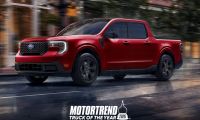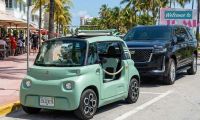Personally, I question the accuracy of the reports and articles about the shortcomings of PHEVs, or at least the conclusions some are making from them. First and foremost, the studies that are being cited rely on some self-reported data from Fuely.com. Any data nerd should know that self reported data, while useful, is always to be treated as suspect since it lacks scientific, controlled collection procedures by relying on people to report what they observe. The vast majority of people are not trained or objective enough to do this with the kind of accuracy one would want from a true scientific study. Second, when responding to the data, we must consider the contextual information that surrounds it. Another primary data set for these assessments comes from the California Bureau of Automotive Repair. California is a place where many people drive long distances on freeways daily (distances that may often be further than the maximum distance of the longest range PHEVs for sale today). We should be looking at data from more sources, from different regions of the country and the world. We should be seeking well managed collaboration between automakers, governments and consumers to gather more complete real world data before coming to these conclusions. But we aren’t so here we go.
As I wrote in a recent article, strong PHEVs are really what we need in order for PHEVs to live up to their maximum potential which would be to greatly reduce emissions from the burning of fossil fuels. Yet automakers haven’t really made that many strong PHEVs and that is a fact that supports the claims of these reports and articles. However drivers can do a great deal to address automakers’ shortcomings on this. For example, PHEV owners can follow the ABC rule (always be charging) and make efforts to plug-in their vehicles at the places they go by utilizing public charging options or, if they drive a PHEV to work, negotiating with their employers to install outlets or charging equipment. Of course those things may not be necessary if the range of your PHEV allows you to make the round trip on electricity alone. Another step to take, especially if one is not driving a strong PHEV, is to drive a bit more gently and learn some techniques to maximize range (like coasting on downhill sections, maximizing regen opportunities, and avoiding rapid acceleration).
If driving a PHEV on a road trip, spend a little time investigating public charging options en route and at your destination; you may be able to get free charges in some places when you stop to eat, shop, or sleep (or free in exchange for patronage or maybe just a beer if you’re staying with friends or family). You can choose a PHEV that most closely matches its electric only range to your typical daily driving routines. If you primarily drive long distances, you may be better off, and do the world a favor, by not buying a PHEV and get either a fully electric vehicle (EV) or a standard hybrid (HEV) that doesn’t plug in. Afterall, if you aren’t going to maximize your use of the larger battery in a PHEV you are wasting both your money and the resources that go into making that PHEV. What does “maximize” mean? That probably depends, but I would say that it means a majority of your total annual miles would be driven on electricity. A more precise way to gauge that might be to compare the difference in fossil fuel use for your given driving patterns between the PHEV and gasoline only versions of/similar to your intended vehicle.
There are still more things we should be doing, if we are going to drive PHEVs, besides charging them up as often as possible. We should look for PHEVs that can recharge faster. Automakers should, at a minimum, have 7kW charging speeds for all PHEVs (with 11kW and greater being the goal we should really shoot for). This allows drivers to recoup more usable range from shorter duration stops. Governments, automakers and utilities need to collaborate to rapidly install tens of thousands more higher speed 240V chargers at places like rest stops, shopping areas, restaurants, hotels, parks, and places of work so that drivers have all the opportunity they need to charge up. This speaks to what governments and automakers need to be doing too, which is: 1. incentivizing only drivers who achieve the rated MPGe figures for their car (via anonymous reporting that the car can either do itself over the air, or via scan tools at annual emissions testing or registrations and 2. Making it easier and more affordable to charge a PHEV.
Finally, we really need to do a complete analysis of our needs and align our vehicle purchases accordingly. While that might lead to someone not buying a PHEV in the first place, it may make the biggest impact of all. Ultimately PHEVs are a temporary, somewhat imperfect solution that are more a necessity of drivers needing a crutch until they can feel comfortable leaving gasoline behind and until the nationwide charging infrastructure is what it needs to be. Until that day comes we owe it to ourselves and the rest of the world to maximize its impact. If we don’t, it becomes more likely that PHEVs won’t be around that long (because governments will stop incentivizing them and may even begin penalizing them). So if you love your PHEV, make sure you plug it in!
Please leave any questions or comments below.
Image provided by Justin Hart
Justin Hart has owned and driven electric vehicles for over 15 years, including a first generation Nissan LEAF, second generation Chevy Volt, Tesla Model 3, an electric bicycle and most recently a Kia Sorento PHEV. He is also an avid SUP rider, poet, photographer and wine lover. He enjoys taking long EV and PHEV road trips to beautiful and serene places with the people he loves. Follow Justin on Twitter for daily KIA EV news coverage.











